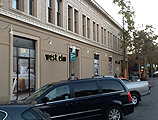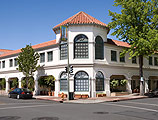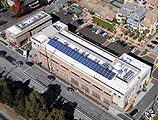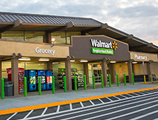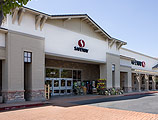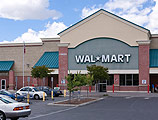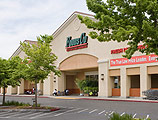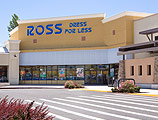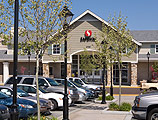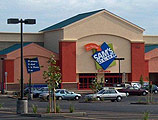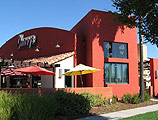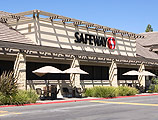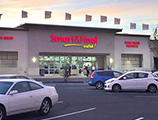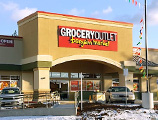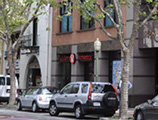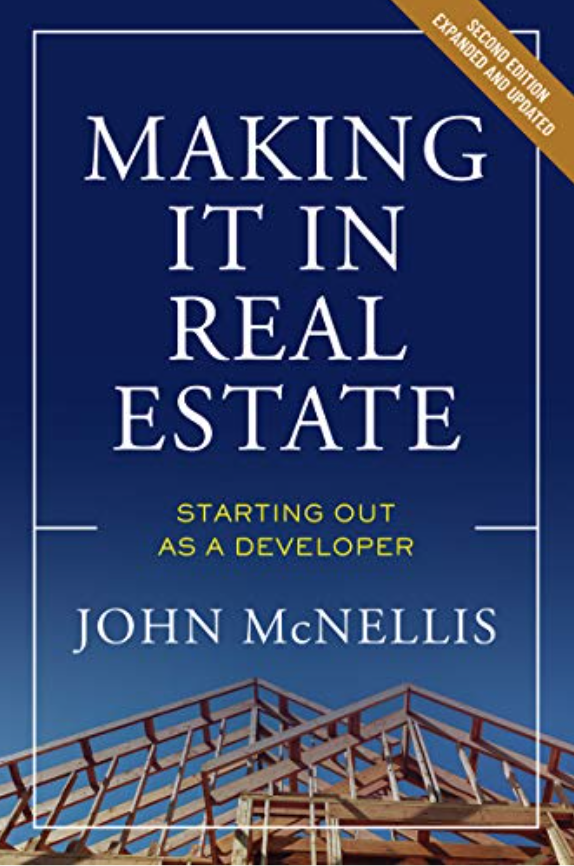Once upon a time University Avenue was the main entrance to Stanford University. Not today. Palo Alto shut the avenue a year ago in an effort to save its struggling mom & pop restaurants. That small bistros are the cuddly polar bear of the pandemic’s economic climate change is indisputable. Helping them without destroying their ecosystem is, as it turns out, rather tricky.
Initially, Palo Alto allowed its eateries to erect parklets on, say, the two parking spaces directly in front of their stores. Then the parklets somehow expanded, blocking the adjacent merchants’ visibility. Finally, the cafés seized the avenue itself. Restaurants with five tables inside their premises suddenly had twenty in the middle of the street. While a godsend for the bistros, turning the street into a six-block long food court came at a price: the loss of its access, visibility and parking. Because these are critical ingredients for the success of almost every merchant, many of the avenue’s other retailers are failing and shuttering their shops for good. Given this, it’s fair to ask whether saving the polar bears by knocking off the walruses is anyone’s idea of a win-win.
This conundrum is not unique to Palo Alto. San Francisco’s Chestnut Street is besieged by parklets that have eliminated virtually all of that shopping district’s parking and drive-by visibility. Parklets are, well, pandemic.
Whether Palo Alto’s shutting University Avenue has contributed to the street’s decline may be debatable. Its decline is not. Pre-pandemic, the avenue’s retail was fully leased to hip chains—Apple, Lululemon and West Elm—and well-established local tenants. Today, its retail vacancy is staggering, at an all-time high. Today, replacement tenants are so scarce that many property owners aren’t even bothering with “for lease” signs in their vacant storefronts.
As with San Francisco, a central contributor to University Avenue’s woes is the loss of its daytime population: the throng of office workers who’ve been shut out for the last eighteen months. Until the Delta variant stormed the barricades, offices were set to reopen just after Labor Day. Now, Google, Facebook and Amazon have all announced lengthy delays, with Google saying its earliest return will be October 18th.
Even when the office workers do return, even when the Palo Alto City Council quietly recognizes the folly of deeding University Avenue to its restaurants, the street’s vacancies will persist. Just as the kingdoms of Westeros were too busy warring among themselves to recognize the White Walkers’ existential threat, cities today—at least the ones we’re dealing with—are dinking around with parklets and walking streets and free public parking while failing to recognize that large swaths of retail are simply gone.
Street fairs and chamber of commerce chili cook-offs won’t revive the internet’s retail roadkill. Malls are dying by the thousands across the country and, with few exceptions, central shopping districts are pocked with vacancies. Ask yourself what you now buy exclusively on the net and then draw a chalk body outline around your local stores selling those items. True, many bricks-and-mortar stores will survive e-commerce’s onslaught—certainly as long as the Boomers are ambulatory—but likely only the top merchants in each field. The net will plow under the also-rans. Today, we have Walgreens, CVS, and Rite Aid; tomorrow, the home delivery pharmacies like Now Rx will snap one of those chains.
Ironically, it is the cities themselves that are the biggest obstacles confronting the revival—or replacement—of the dying malls and challenged shopping districts. By failing to recognize that the hat shops of today are fading into extinction, cities can delude themselves into clinging to their antiquated zoning.
Palo Alto’s zoning is particularly restrictive. It limits uses in its retail districts to old school retailers: those who sell stuff: hard goods like lamps or soft like dresses and sweaters. Shockingly, the city won’t allow banks, a terrific retail use. To repeat a prior observation: Mandating only “true retailers” in a shopping district is like building a bird house for passenger pigeons. Won’t matter how pretty it is, they’re still extinct.
To return University Avenue to its pre-pandemic health, Palo Alto—and every other city in the country with a fading shopping district—needs to shrink its retail districts while expanding their zoning to include every public-serving business one can imagine: any business with a customer, a patient, a client, a student, or any sort of visitor at all. Why? You can’t visit a chiropractor on the net. Palo Alto needs to drop its prohibition against financial services, and allow dentists, travel agents, gyms, yoga studios, doctors—even brokerage offices—to occupy those otherwise unfillable retail storefronts. Visitors equal vitality.
The old school retailers aren’t coming back. Department store sales have dropped nearly seventy-five percent in the last thirty years. They are on their way to Elysium, to join the hundreds of other retailers whose time has come and gone. Until city leaders recognize this, until they recognize that retail is now more about services than sales—until they lift their archaic zoning—their downtowns will suffer.





